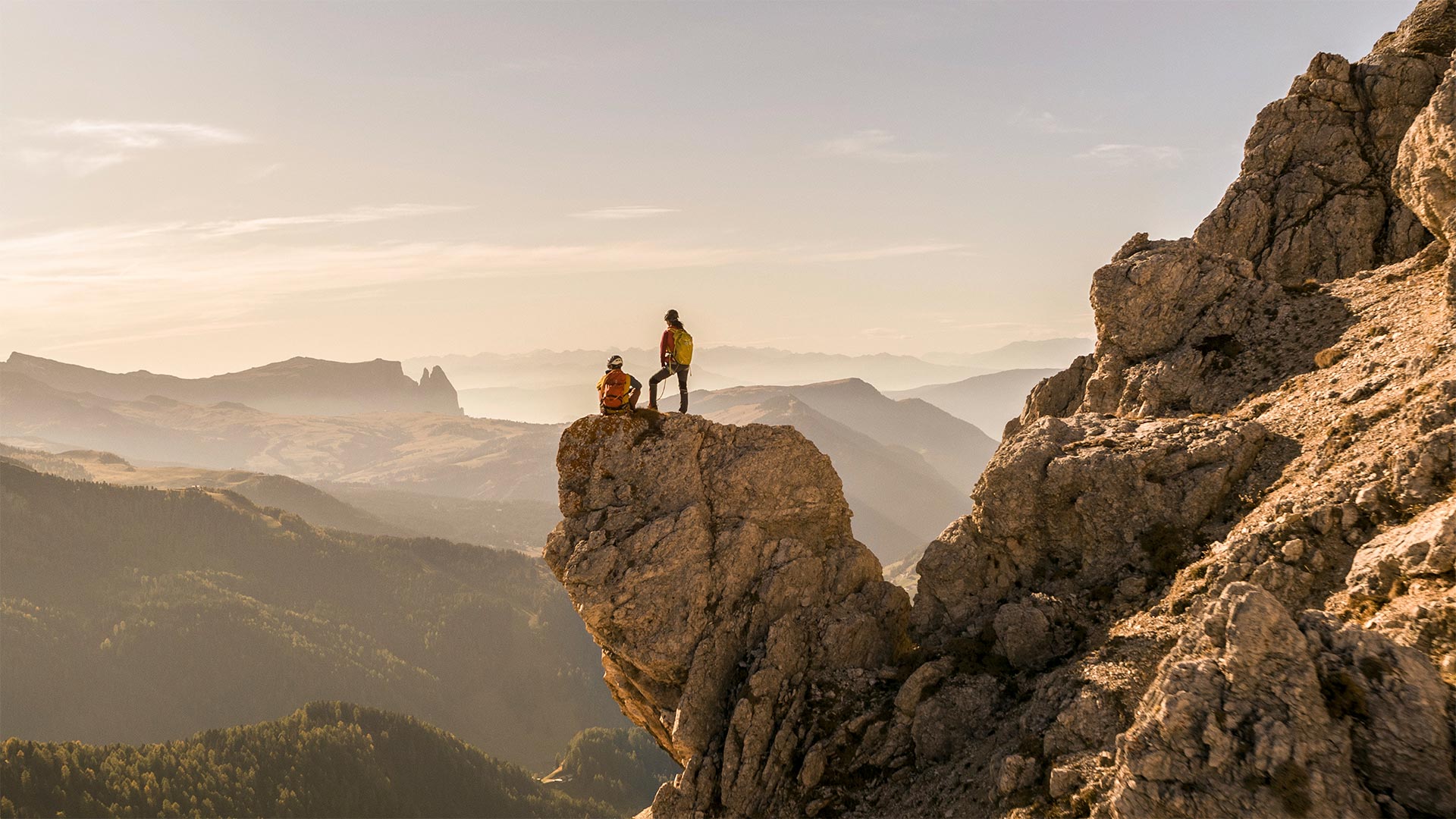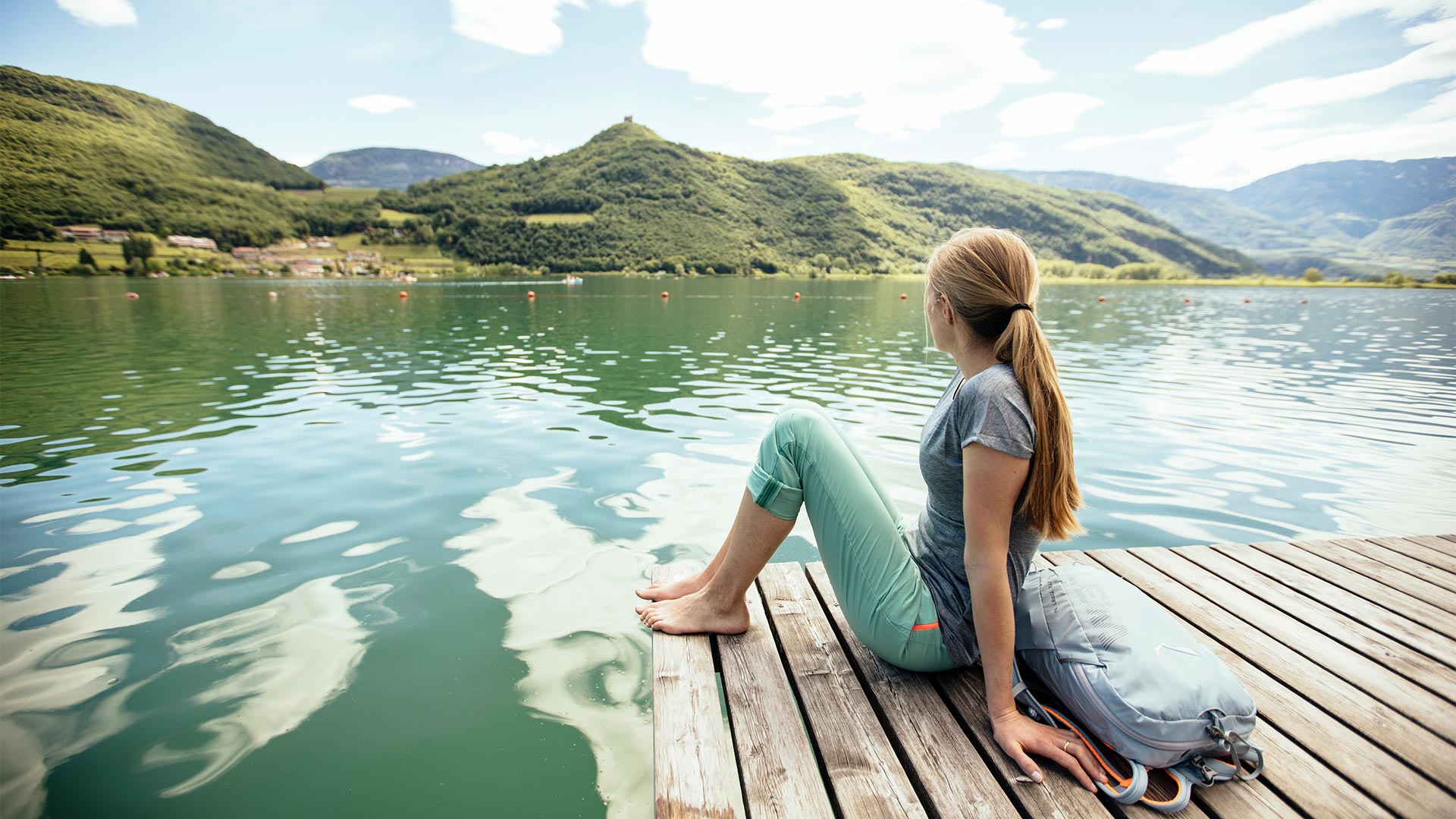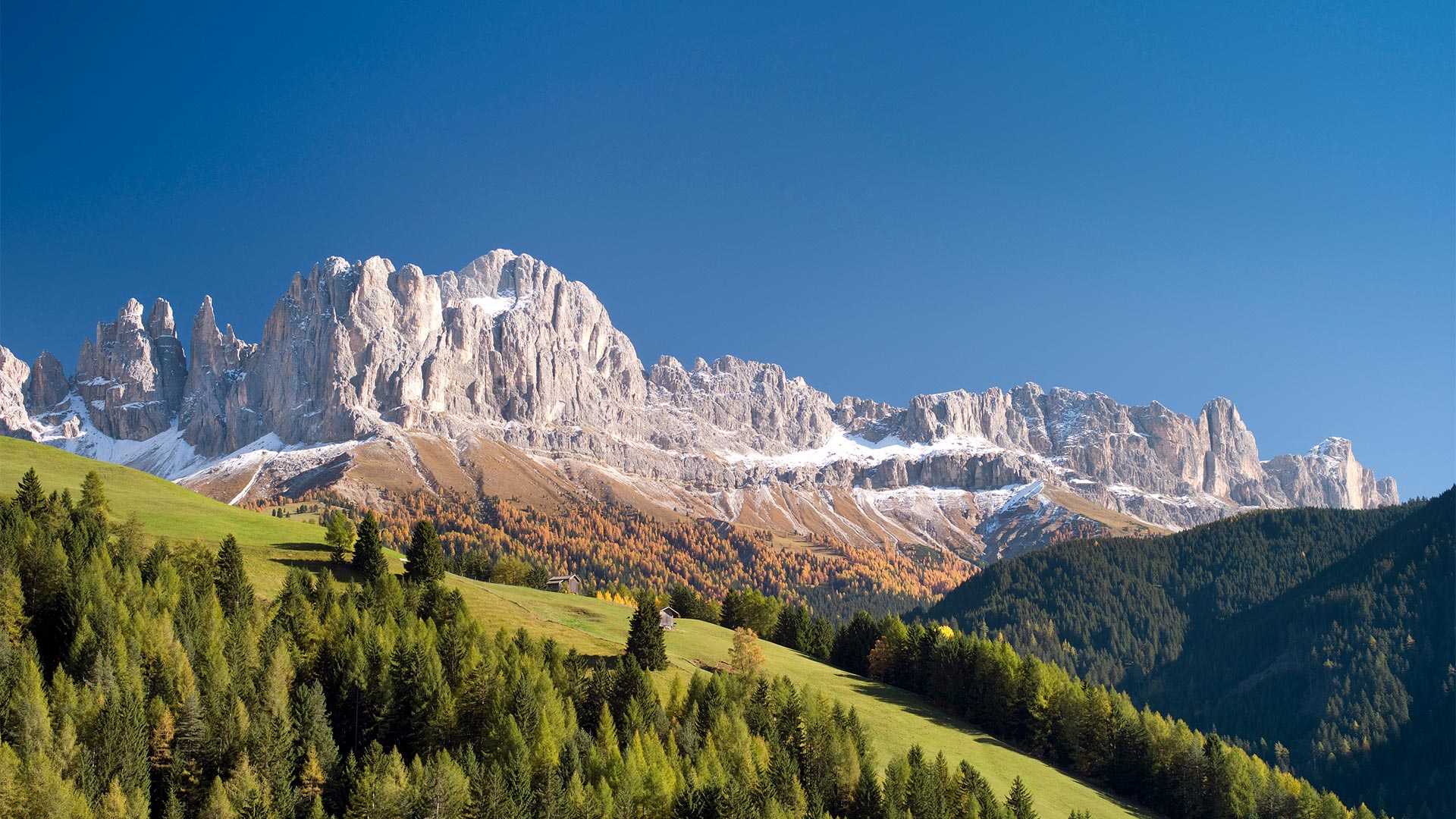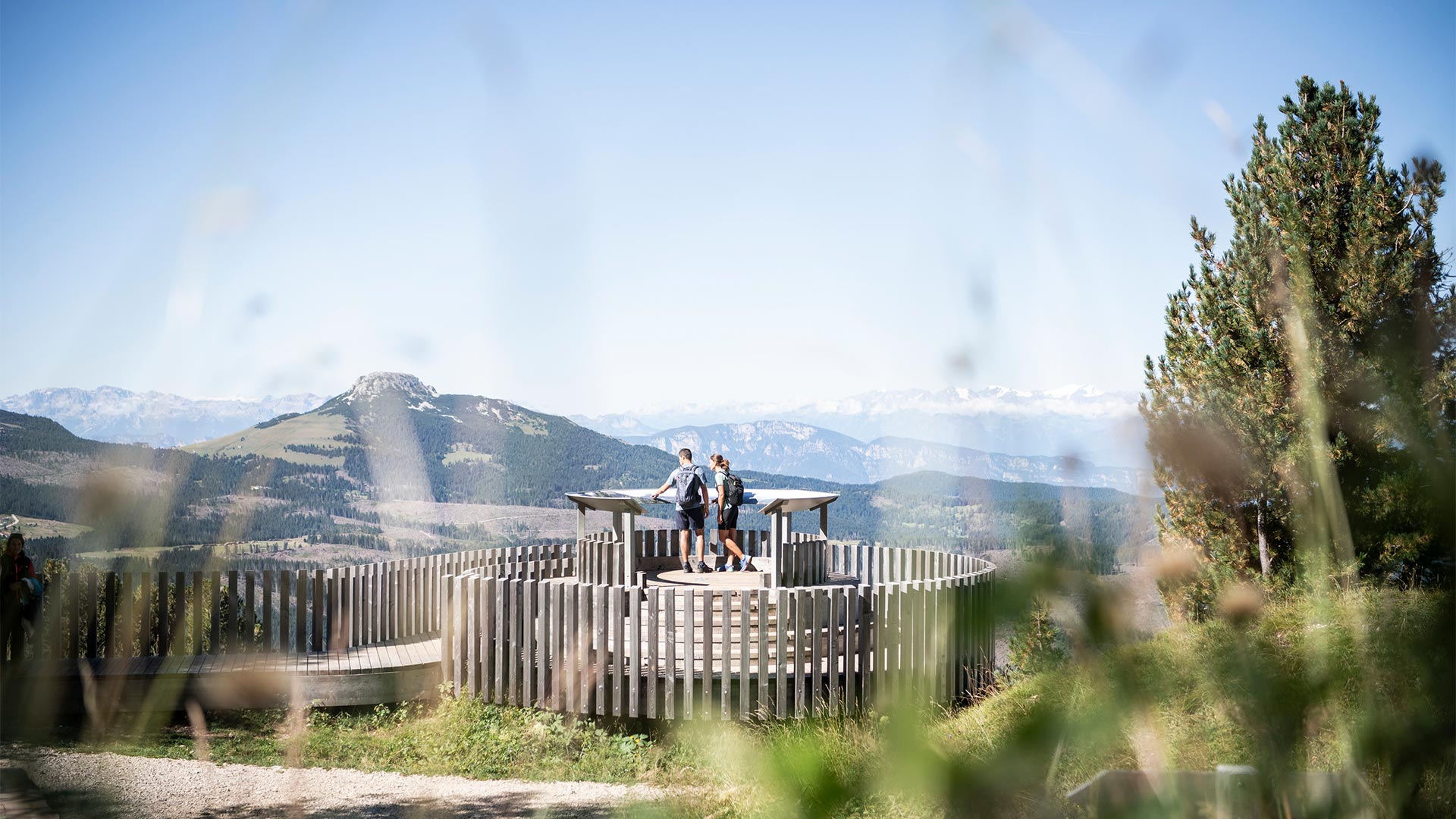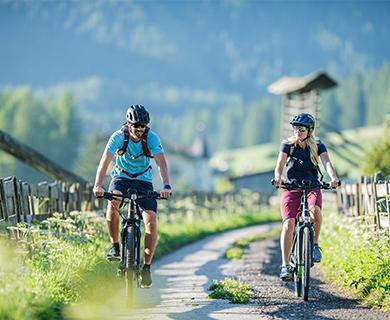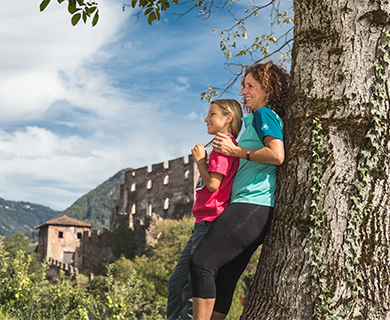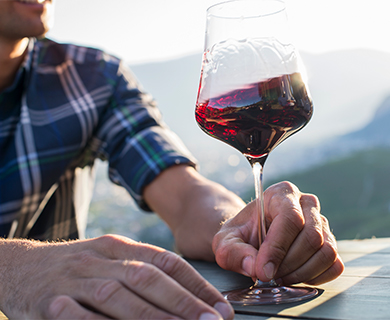One step away from Bolzano
Bolzano offers its visitors an urban and stimulating environment, but it only takes a few minutes to reach true oases of peace.
Dolomites
Visible from all parts of the city, the Dolomites are mountain systems of outstanding natural beauty. In 2009 they were recognised by UNESCO as a World Heritage Site.
The name "Dolomites" derives from their rocks called "dolomia" in honour of the French naturalist Déodat de Dolomieu (1750-1801), who was the first to study their particular chemical composition (double carbonate of calcium and magnesium). Due to its special composition, the white rocks are tinged with gold, pink, orange, red and purple at sunset and sunrise. This natural phenomenon called Enrosadira is still linked to many tales, the best known being the legend of King Laurin and his rose garden on the Catinaccio.
If you want to enjoy the Dolomite panorama right in front of you, we recommend a trip to Soprabolzano, Collalbo or the Corno del Renon.
If you want to enjoy the Dolomites to the fullest, you can easily reach Obereggen, Lake Carezza and the Alpe di Siusi in 30-40 minutes by car or public transport.
Obereggen is one of the most popular ski and hiking areas in the Dolomites. Only 20 minutes away from Bolzano, it offers pure alpine emotions in winter and summer.
Cableways
Bolzano is situated at 265 metres above sea level in a basin surrounded by mountains. In just a few minutes by cable car you can reach the sunny plateaus and beautiful forests on the Renon Hills and Colle, where you can feel a clear and crispy atmosphere. At an altitude that ranges from 1000 to 1400 metres, you will enjoy superb views of the Dolomites, and breathe deeply into the delicate scents characteristic of woodlands and pastures.
Wine Road
The well-known South Tyrolean Wine Route, which begins in Nals and runs through the Oltradige and Bassa Atesina to Salorno, also passes through the South Tyrolean capital. The picturesque villages along the South Tyrolean Wine Route fascinate with their traditions, the lifestyle of the locals and their authenticity. Travelling along this route means embarking on a journey of discovery into the origins of South Tyrolean wine-growing.
https://www.suedtiroler-weinstrasse.it/en.html
Colle
Colle means tranquillity. Large forests and a beautiful mountain landscape with many opportunities for walking; all this just a few minutes from the city. Colle is the northernmost summit of the hills south of Bolzano, which extend as far as Corno Bianco and are bordered to the east by Val d'Ega and to the west by Valle dell'Adige. Near the mountain station, a lookout tower provides a view of the peaks and glaciers of the central Alps and the nearby Dolomites.
The best way to reach this true oasis of peace is by cable car, the first cable car in the world to transport people.
Timetables
Hiking
Thanks to the numerous footpaths and marked hiking trails, Colle is an ideal starting point for excursions, whether on foot, mountain bike or horseback. The European long-distance hiking trail E5, which leads from the Lake Constance to Venice, is probably the most famous trail. In the hiking map you will find hiking suggestions and a list of restaurants with their opening hours. Click on the picture to download the PDF file or order the map by mail for free under the following link.
Raffeiner Orchid World
In Gargazzone, just a few minutes by car from Bolzano, a tropical-inspired park has been created dedicated to the queen of flowers, the orchid. 6000 square metres where you can touch and smell about 500 different species of orchid.
Laives - Leifers
Laives, the youngest of the eight cities of South Tyrol, is situated south of Bolzano, surrounded by a sea of apple orchards. The municipality of San Giacomo merges seamlessly with the quarter of the provincial capital of the same name. Laives is by no means a suburb but has its own proud history. Archaeological finds show that there already were iron age settlements in this region. Laives is first mentioned in the records in 1237. It did not become an independent municipality until 1819. In 1985 it became a city of South Tyrol.
The apple town Laives and the municipalities Pineta, San Giacomo and La Costa have circa 18.000 inhabitants. Laives is a melting pot of cultures and opposites. Germans and Italians live here side by side. Even if the German card game of choice is “Watten” while the Italians play “Briscola”, the lifestyles of the peoples have more and more cross-overs. At Christmas the traditional Zelten Christmas cake is eaten as much as the Italian Panettone. Village fêtes, Sacred-Heart fire, Törggelen, throwing rice at weddings and the easy-going lifestyle can appeal to both sides.
For a long time the apple town Laives was characterised by agriculture. In the 19th century it became an important centre for the mining of porphyry, for wood processing and for silk spinning.
The landmark of the village is Chiesa di San Pietro, which is also reflected on the town’s coat of arms. The small church of San Pietro dates back to the 12th century and was once the chapel of Castello Lichtenstein. There are only a few ruins of the castle walls left today, but Chiesa di San Pietro has been preserved in its entirety.
For more information about the city please visit the official website: https://www.bolzanosurroundings.info/en/laives.html



